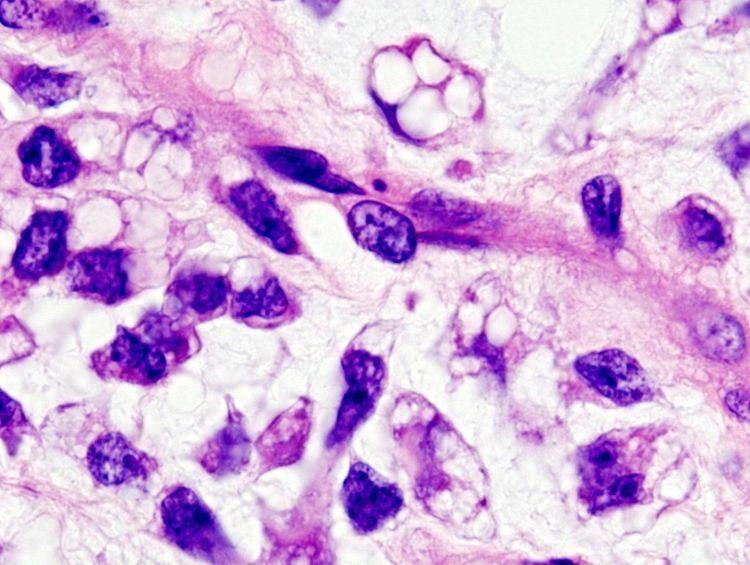Specialty Oncology DiseasesDB 31482 MeSH D008080 | ICD-O M8850/3 eMedicine derm/856 | |
 | ||
Liposarcoma is a cancer that arises in fat cells in deep soft tissue, such as that inside the thigh or in the retroperitoneum. Liposarcoma is a rare type of cancer that bears a resemblance to fat cells when examined under a microscope.
Contents
They are typically large bulky tumors, and tend to have multiple smaller satellites that extend beyond the main confines of the tumor.
Liposarcomas, like all sarcomas, are rare.
Signs and symptoms
Patients usually note a deep seated mass in their soft tissue. Only when the tumor is very large do symptoms of pain or functional disturbances occur.
Retroperitoneal tumors may present themselves with signs of weight loss and emaciation and abdominal pain. These tumors may also compress the kidney or ureter leading to kidney failure.
Diagnosis
The diagnosis is established by histologic examination of the tissue, i.e., biopsy or excision. Lipoblasts are often present; these are cells with an abundant clear multi-vacuolated cytoplasm and an eccentric darkly staining nucleus that is indented by the vacuoles.
Subtypes
Several subtypes of liposarcoma exist:
Prognosis
The prognosis varies depending on the site of origin, the type of cancer cell, the tumor size, the depth, and proximity to lymph nodes. Well-differentiated liposarcomas treated with surgery, intra-operative distilled water lavage and radiation have a low recurrence rate (about 10%) and rarely metastasize.
Five-year survival rates vary from 100% to 56% based on histological subtype.
Epidemiology
Most frequent in middle-aged and older adults (age 40 and above), liposarcomas are the second most common of all soft-tissue sarcomas following malignant fibrous histiocytomas. Annually 2.5 cases occur per million population.
Notable cases
Philanthropy
The Liposarcoma Genome Project at the Massachusetts General Hospital Cancer Center is currently researching liposarcoma to learn more about its genetic drivers and design effective new treatment options for patients.
The Wendy Walk is an organization devoted to funding research for liposarcoma.
